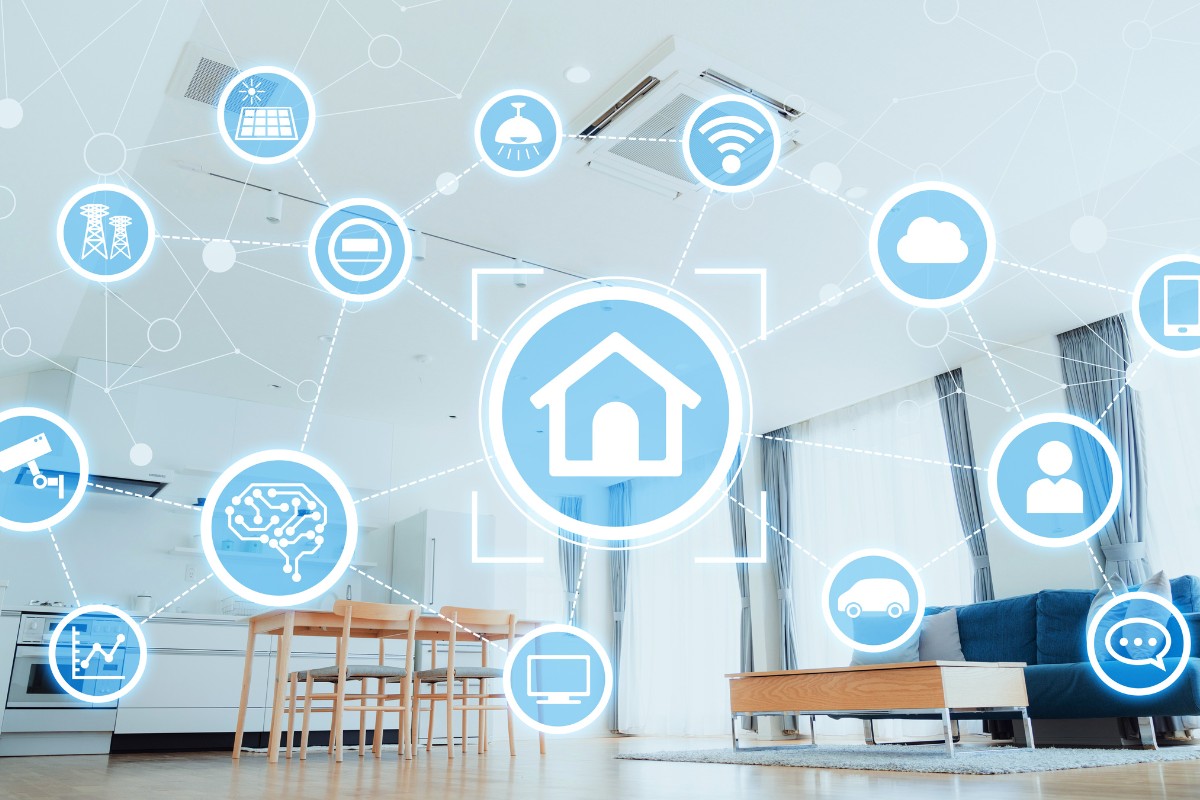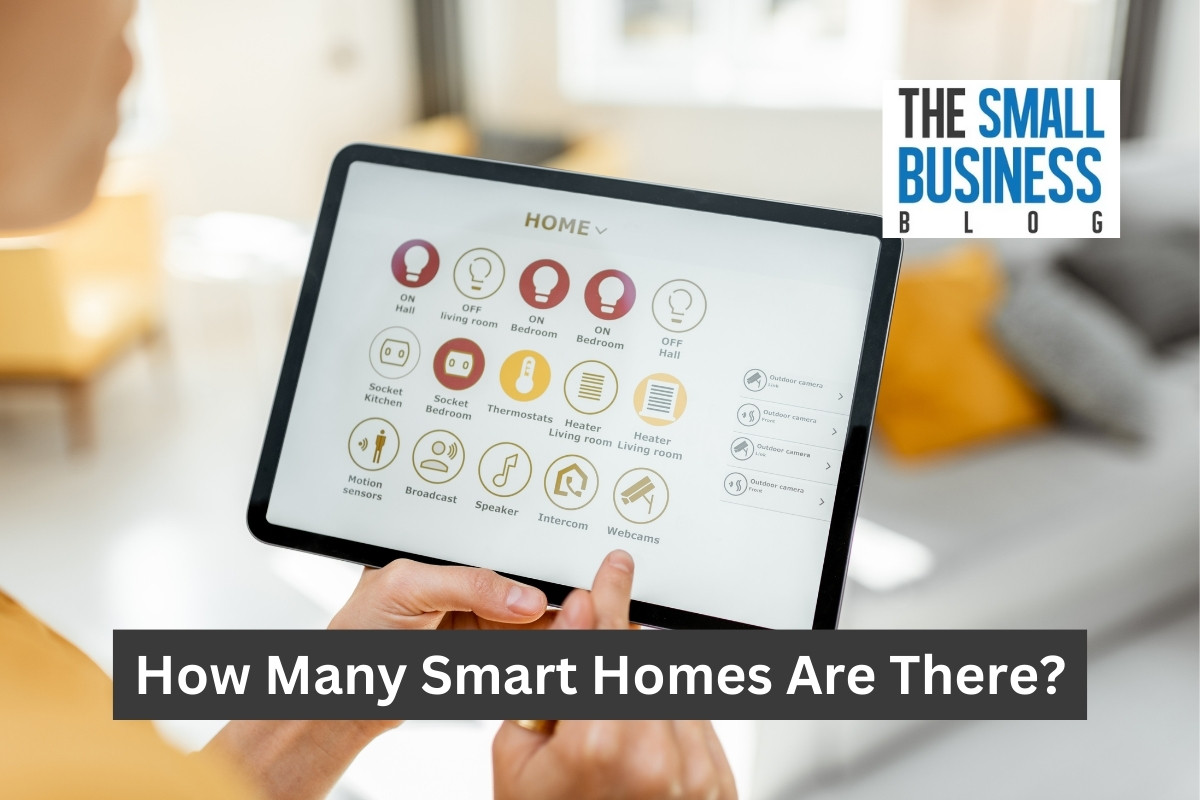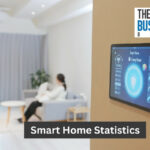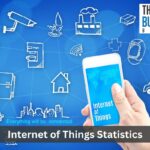Smart homes have become more popular in recent years as more people choose to automate their homes via internet-connected devices.
So, how many smart homes are there?
This is the topic we will be discussing in this article.
Statista reported that there are an estimated 360.72 million smart homes across the globe.
However, smart homes are expected to see growth to 422.26 million by 2025.
Some factors driving this growth include the increasing affordability of smart home devices, the ever-increasing awareness of smart home technology benefits, and the growing accessibility of high-speed internet.
The growth of smart homes is beginning to have a significant impact on how we work and live in today’s world.
Smart home technology is making our work and home lives more secure, efficient, and convenient.
As this technology becomes more affordable, we can expect to see more people adopting smart home technology.
Let’s learn more about smart home technology and how many smart homes there are in 2024.
Post Contents
- 1 Key Statistics
- 2 How Many Smart Homes Are There in 2024?
- 2.1 1. Globally, there are an estimated 360.72 million smart homes.
- 2.2 2. China has the largest market share in smart home users at 78.42 million.
- 2.3 3. In 2023, 60.4 million American homes actively use smart home devices.
- 2.4 4. 53.9% of American homes will be automated via smart home technology by 2023.
- 2.5 5. In the United States, it’s estimated that the average home has 20.2 connected devices.
- 2.6 6. 77% of people with smart homes are under 55 years old.
- 2.7 7. American smart home device users spend an average of $1,172 on their smart technology.
- 2.8 8. In the United States, smart home technology is expected to have a CAGR of 10.2% between 2024 and 2027.
- 2.9 9. In Europe, smart home revenue is expected to reach $35.51 billion by 2023.
- 2.10 10. The Asia Pacific region is expected to be the largest market for smart homes by the end of 2023.
- 3 FAQs
- 4 Conclusion
Key Statistics
- Globally, there are an estimated 360.72 million smart homes.
- China has the largest market share in smart home users at 78.42 million.
- 60.4 million American homes actively use smart home devices.
- 53.9% of American homes are automated by smart home technology.
- In the United States, it’s estimated that the average home has 20.2 connected devices.
- 77% of people with smart homes are under 55 years old.
- American smart home device users spend an average of $1,172 on their smart technology.
- In the United States, smart home technology is expected to have a CAGR of 10.2% between 2024 and 2027.
- In Europe, smart home revenue is expected to reach $35.51 billion by 2023.
- The Asia Pacific region is expected to be the largest market for smart homes by the end of 2023.
How Many Smart Homes Are There in 2024?

1. Globally, there are an estimated 360.72 million smart homes.
There are an estimated 360.72 million smart homes across the world.
By 2025, that number is expected to be 422.26 million global smart homes.
Growth between now and 2027 shows that experts expect to see 672.57 smart homes all over the world by 2027.
Furthermore, this market is expected to see an 86.47% growth between 2023 and 2027.
Also, the Statista Research Department reported that smart home users have been continuously increasing in the past few years.
(Statista)
2. China has the largest market share in smart home users at 78.42 million.
In terms of smart homes on the globe, China has the most with 78.42 million smart homes.
The United States follows and ranks second in smart home market share at 57.55 million smart home users.
At the other end of this spectrum, Finland has only 0.53 million smart homes.
(Statista 2)
3. In 2023, 60.4 million American homes actively use smart home devices.
According to data, 60.4 million American homes are using smart home devices in 2023.
This includes, but isn’t limited to smart appliances, smart lighting, smart speakers, smart security systems, etc.
In fact, voice assistant technology is expected to grow to 8.4 billion units being used by 2024.
(Today’s Homeowner)
4. 53.9% of American homes will be automated via smart home technology by 2023.
Data shows that 53.9% of homes in the United States will be automated by smart home technology by 2023.
So, by the end of this year, which is quickly approaching, we should see over half of American homes having some kind of smart home automation devices.
(TechJury)
5. In the United States, it’s estimated that the average home has 20.2 connected devices.

The report that revealed the fact that the average home in America has 20.2 connected devices was based on an analysis of 41 million American homes across 1.8 billion connected devices.
More people are using some form of smart home devices for various purposes.
(ACXIOM)
6. 77% of people with smart homes are under 55 years old.
It’s not surprising that 77% of people living in smart homes are under 55 years old.
Most people are younger and more adept and apt to use smart home devices than many Gen X and Baby Boomers.
In fact, most smart home users are among Millennials and some Gen X or younger.
Furthermore, 40% of all smart home devices are owned by people aged 18 to 34.
(Exploding Topics)
7. American smart home device users spend an average of $1,172 on their smart technology.
Data reveals that smart home device owners in the United States spent an average of $1,172 on smart home tech.
Additionally, 60% of Americans with smart home technology devices claim this tech has had a positive effect on their lives.
(Today’s Homeowner)
8. In the United States, smart home technology is expected to have a CAGR of 10.2% between 2024 and 2027.
Smart home statistics have shown that the American smart home market is expected to keep growing.
In fact, the CAGR is expected to be 10.2% between 2024 and 2027.
Therefore, by 2024, there will be nearly 70 million smart homes in the United States alone.
(Oberlo)
9. In Europe, smart home revenue is expected to reach $35.51 billion by 2023.
China and America may dominate the smart home market, but European homes are also using smart home devices.
In fact, by the end of 2023, it’s expected that Europe will account for $35.51 billion (USD) in revenue.
That’s a change of 24.2% over the revenue generated in Europe in 2022.
(EnterpriseAppsToday)
10. The Asia Pacific region is expected to be the largest market for smart homes by the end of 2023.

We already addressed the fact China has the most Smart homes in the world.
Therefore, it makes sense that the Asia Pacific market will be the largest for smart home technology this year and probably going forward for at least a few years.
The United States may eventually catch up.
(EnterpriseAppsToday)
FAQs
What is a Smart Home?
A smart home is designed to use internet-connected devices for the monitoring and managing of lighting, heating, appliances, security, etc.
This kind of technology can be used to automate certain tasks such as turning the lights on when you get home or adjusting the temperature when you go to bed.
What are some benefits of a Smart Home?
We scoured the internet to find these benefits of smart homes:
1. Convenience: Smart home devices are remotely controlled via a tablet, smartphone, or a voice assistant like Echo or Google Assistant. It makes managing your home security, appliances, lighting, and other things easier.
2. Energy Efficient: Smart thermostats are used to make the proper adjustments to your home temperature to help you save money on electric bills.
3. Security and Safety: Smart homes usually come equipped with smart security systems that monitor your home for intruders and send you an alert if something does go wrong. Also, smart locks are designed to lock and unlock your doors remotely and smart cameras are used to keep a smart eye on your house and property when you’re gone.
4. Peace of Mind: The idea of having smart home devices gives homeowners some peace of mind when they are home or when they are gone. It makes you feel like you have some control over your home and property.
What are some types of Smart Home devices?
We looked and found these Smart Home devices:
1. Lighting: Smart light switches and bulbs let you remotely control your lights. You can set a schedule for lights on and off and even create customized lighting scenes.
2. Climate Control: Smart thermostats let you set your temperatures, but better than that they learn your habits and will make appropriate adjustments that save you money.
3. Security: Smart security devices are used for door locks, security cameras, and for alerts when something happens on your property or in your home.
4. Entertainment: Smart speakers, streaming devices, and televisions let you control your entertainment system with voice-activated features from your remote or smartphone.
5. Appliances: Smart Homes may be equipped with smart appliances like washer, dryer, refrigerator, etc. These appliances can also be controlled via remote. You can set it to get notifications when the appliances are done with their tasks.
How much does it cost to set up a Smart Home?
The costs incurred from setting up and maintaining a Smart Home are determined by the type of devices you use.
There are several affordable Smart Home devices on the market, so you can start there and add more as your budget allows.
For instance, you can get started with a smart thermostat and a few smart light bulbs.
Once you grow accustomed to these smart devices, you can add more like smart speakers or even a smart security system. It’s ultimately up to you.
Conclusion
Do you have a smart home device in your home?
If you have a smart speaker, you do.
Any kind of smart home devices means you’re one of the over 360 million global smart home users in the world.
How do you feel about smart home technology and how do you use it?
You’ve seen what kind of technology is used for smart home devices, so you should be able to choose what kind you want and how you would use it.
Now that we’ve answered the question of how many smart homes there are worldwide, we hope you feel more aware and enlightened about this technology and its benefits.






























